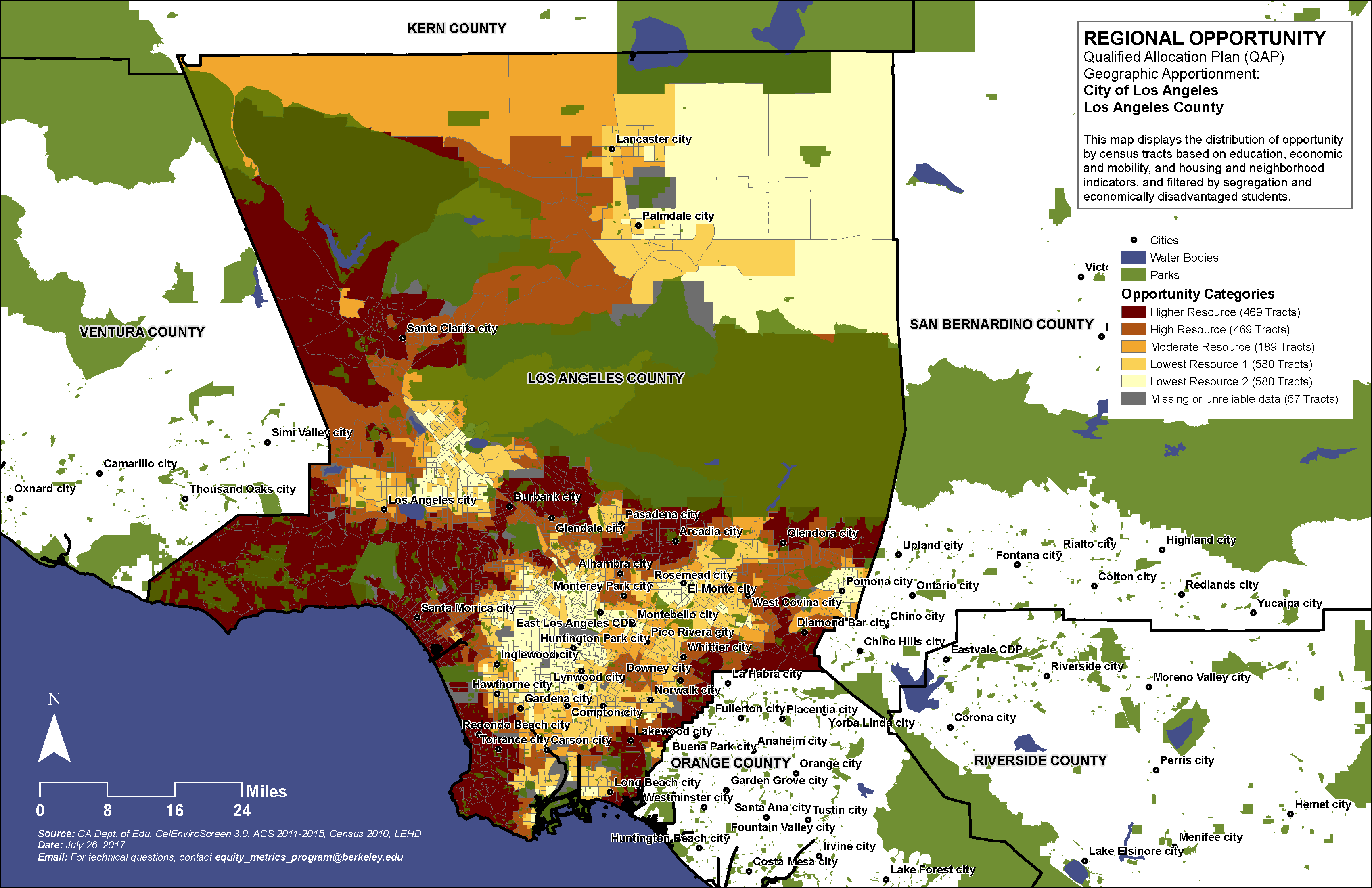FOR IMMEDIATE RELEASE
Haas Institute's Opportunity Mapping approach informs proposed policy change in California; Requesting support from advocates during public comment period
BERKELEY, CA: A major housing program in California may see new changes to provide better opportunities for families as a result of collaboration between the Haas Institute and a housing taskforce convened by two state agencies. The California Tax Credit Allocation Committee (TCAC) and the California Department of Housing and Community Development (HCD) brought together a taskforce in February to identify an appropriate data-driven tool for measuring and mapping opportunity within the state. This group, comprised of researchers and policy advocates, was formed partially in response to research by the Haas Institute for a Fair and Inclusive Society showing that Low Income Housing Tax Credit (LIHTC) projects for families in the Bay Area were overwhelmingly sited in low opportunity areas. The two agencies requested the maps to support regulation changes for 9% LIHTC projects that would encourage the construction of family housing developments in neighborhoods with important amenities associated with childhood development and economic mobility, such as high-performing schools and access to jobs.
The Haas Institute, along with Enterprise Community Partners, the California Housing Partnership Corporation, and several other organizations, jointly developed a research-based methodology for mapping opportunity to help direct the siting of LIHTC developments that are intended for families. Using the Haas Institute’s Opportunity Mapping 2.0 framework, and incorporating the most up-to-date research on upward mobility and intergenerational opportunity, the taskforce’s six-month project culminated in producing maps for nine regions in California (see sample map below and more here).
This effort to measure opportunity could help alleviate the exclusionary barriers for families with children to high-amenity neighborhoods, and enable them to access quality resources and services.
The first set of maps and accompanying summary tables have been released publicly on the State Treasurer’s website, with the next set scheduled to be released later this month.
TCAC is soliciting public comments on these maps, which will influence how these maps will affect the Qualified Allocation Plan (QAP) regulation changes for 2018.
During the public comment period, the Haas Institute is issuing an open call to fair housing advocates, researchers, community groups, and organizations to support TCAC’s efforts to incentivize more housing development in higher-resource areas. Support is critical to passing regulation changes that maximize opportunity for low-income children and families in California.
The mapping approach is unique to California’s QAP, but could potentially be used as a model for other states to further their Fair Housing goals.
Media Contact
Rachelle Galloway-Popotas
galloway.popotas@berkeley.edu.
Mapping Contact
Samir Gambhir
equity_metrics_program@berkeley.edu


